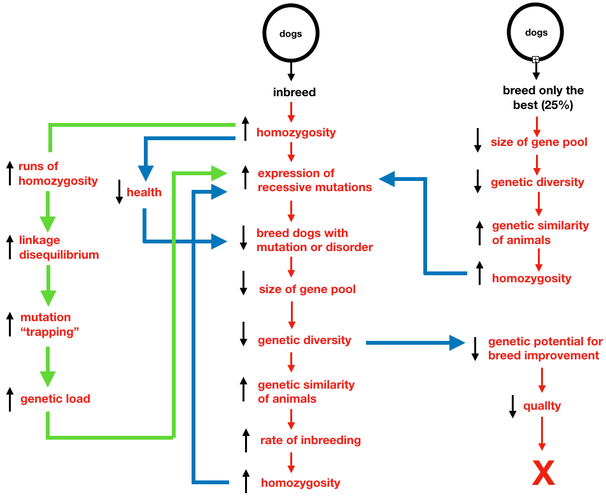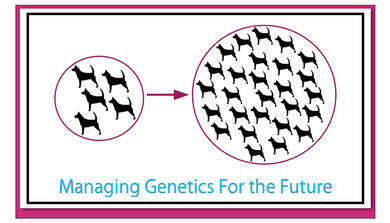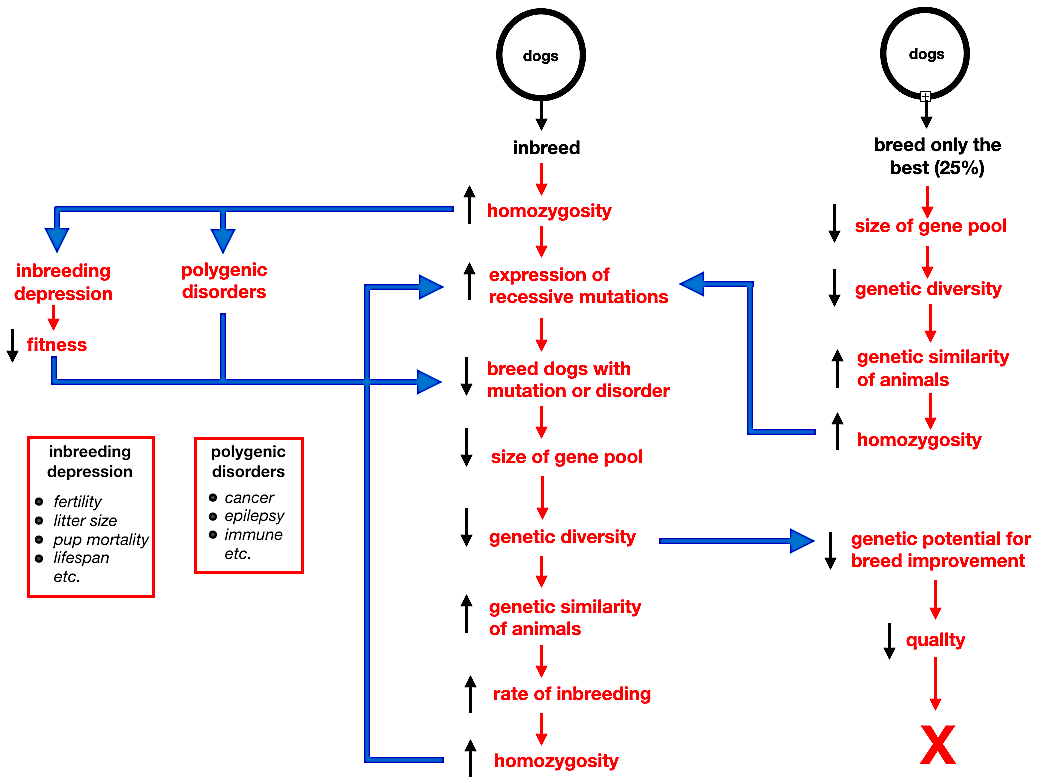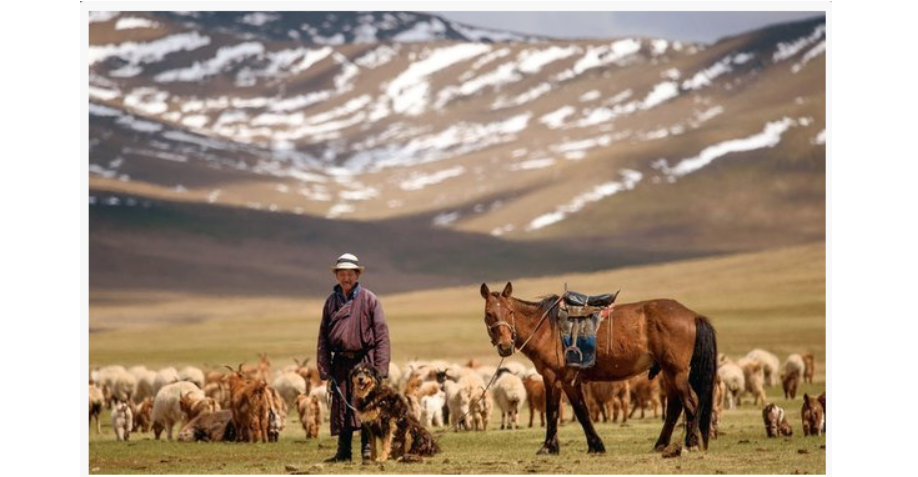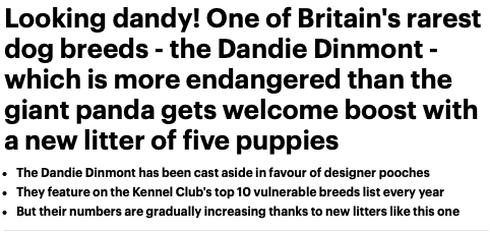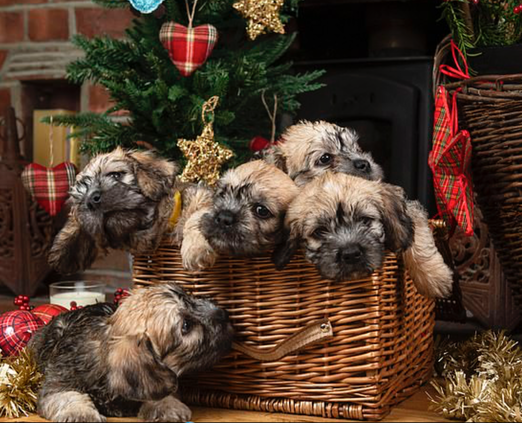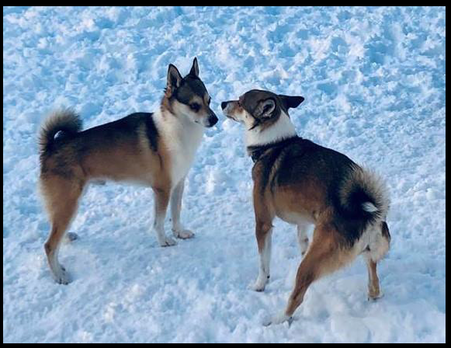(If you didn't read my previous post, you should do that first and return here: Simple strategies to reduce genetic disorders in dogs)
Once again we start with inbreeding in a population of dogs. Mating related dogs produces inbreeding, in which a puppy gets identical copies of an allele from both parents, increasing the fraction of genes that are homozygous. To here, we are following the same steps as we reviewed before.
At this point, we will add a new detail to our path diagram. The homozygosity produced by inbreeding might be scattered over the chromosomes, or it can be in blocks of adjacent genes on a chromosome.
Blocks of homozygosity on the chromosomes are called "runs of homozygosity" (ROH), and they have two important properties.
a) the blocks of homozygous alleles tend to get longer and longer with inbreeding;
b) linkage disequilibrium increases with inbreeding.
We need to define "linkage disequilibrium". We usually think of inheritance as one of the two alleles at a loci that are passed on to a descendant by random chance. This is a simple and useful way to think about inheritance, but in reality it can be more complicated. In fact, the regions of homozygous loci that form runs of homozygosity tend to be inherited together as a block. This non-random inheritance at adjacent loci in a run of homozygosity is called "linkage disequilibrium".
So, follow along using the chart below -
1) inbreeding produces homozygosity
2) "runs" of homozygosity (ROH) increase
3) linkage disequilibrium increases
4) deleterious mutations get trapped in blocks of homozygosity
6) the expression of recessive mutations increases
This path now joins the main pathway that we discussed previously.
Now this path feeds back into the larger pathway, where we remove affected dogs or entire lines in an effort to get rid of the genes causing problems. But this reduces the size of the gene pool and throws out valuable genetic variation.
And so it goes, round and round, the quality of the gene pool deteriorating a bit more with every generation.
How do we fix this?
If we breed a very inbred dog to one that is not closely related, we can reduce homozygosity (inbreeding) in the puppies. Less inbreeding means smaller blocks of homozygosity, so linkage disequilibrium is reduced. Mutations and other unwanted genes that were trapped in runs of homozygosity are now "set free", so you can breed away from them. There is also new variation that you can make use for improvement of phenotype, so selection will be more effective.
Note that the most useful dogs for an outcross will likely be the ones that are not what you would choose to breed to on the basis of phenotype. The dogs you gravitate to with good type are likely to have all the same ROH you are battling with already, and there will be little to gain. Paradoxically, dogs with more phenotypic variation, especially as it varies away from the extremes in type, will have the most to offer you in terms of escaping from the feedback loop illustrated above. You probably won't get stunning puppies out of a breeding with a dog with mediocre type, but you will escape the loop that is strangling your breeding program and sending purebred dogs towards the cliff.
The solution is genetic management. Understand how the problems are created. Understand the critical importance of genetic variation and reduced inbreeding for improving health. And breed in a way that will be sustainable into the future.
The next course is Managing Genetics for the Future and starts 7 January 2019. You can learn more about it and register here -
https://www.instituteofcaninebiology.org/managing_genetics.html
I hope to see you there!
ICB's online courses
***************************************
Visit our Facebook Groups
ICB Institute of Canine Biology
...the latest canine news and research
ICB Breeding for the Future
...the science of animal breeding
